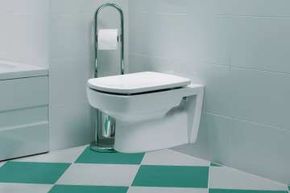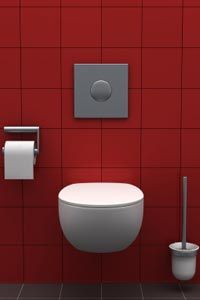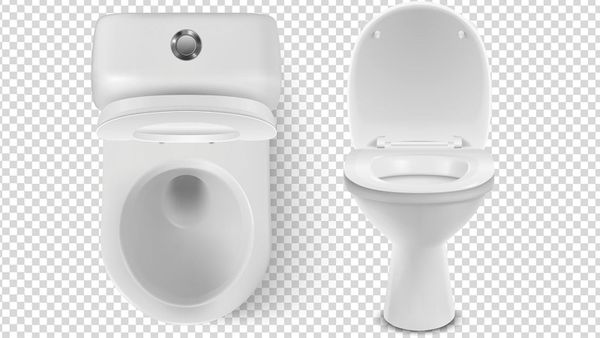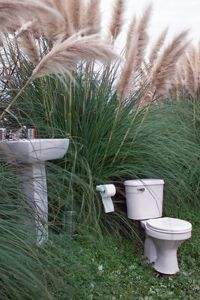Have you ever wondered why there is a tank of water attached to some toilets? Sinks and bathtubs aren't attached to tanks, so why does the toilet need one? The reason is that most residential flush toilets operate using a siphon, which is a tube at the bottom of the bowl fixture. Water coming into the toilet must do so fast enough to fill the siphon tube, allowing the water and whatever else is in the bowl to be sucked through and pulled down the drain.
Most residential water supply lines don't allow water to enter a toilet fast enough to trigger the siphon effect, so the tank provides a solution. When a toilet is flushed, the water held in the tank cascades down with enough force to activate the siphon. Without that gallon or so of water pouring into the bowl all at once, the water would simply spill over into the siphon tube and remain more or less level without creating an actual flush.
Advertisement
As the name suggests, a tankless toilet is any toilet that does not rely on a tank of water to clear its bowl. Instead, tankless toilets receive water directly from a supply line at a high enough pressure that a single flush can carry human waste through the drainage system. For the most part, these toilets are powered using only the force of water entering from the supply line. In buildings where water pressure is lacking, such as most private homes, tankless toilets can be helped along with pumps or other technologies that power the flush.
All urinals and the vast majority of toilets in public restrooms are tankless. There are also tankless toilets in some homes. They range from low-tech units made for urban apartments to high-tech futuristic models created for the dedicated toilet enthusiast. Traditionally, a variety of factors have prohibited the widespread use of tankless toilets in U.S. homes; however, that may be changing. Tankless toilets are steadily growing in popularity and could one day surpass the tank toilet as America's commode a la mode.
Advertisement




